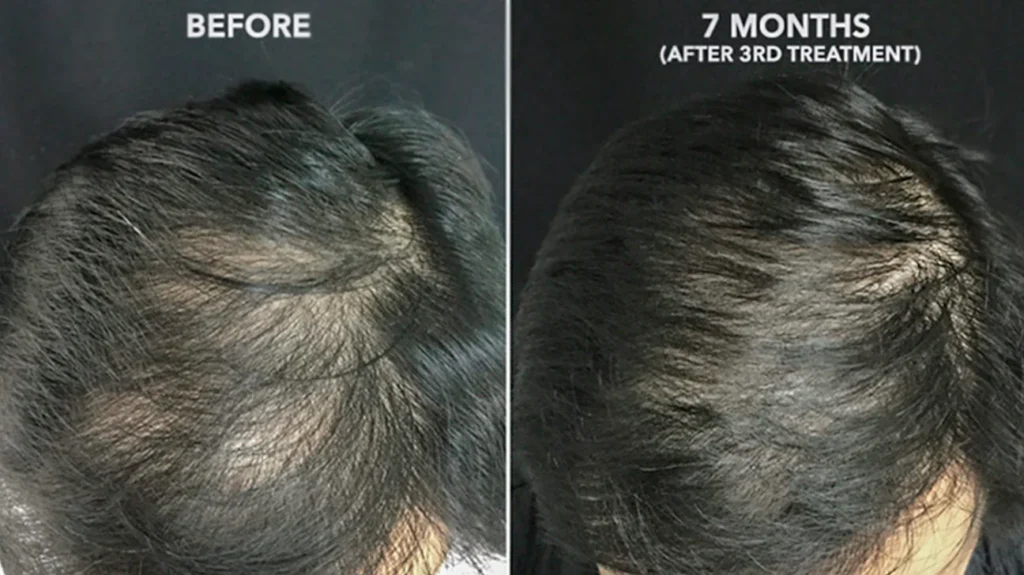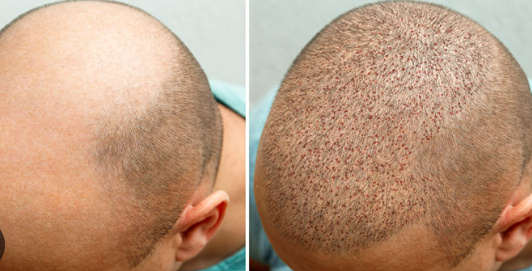
Hair loss is a common problem that affects millions of people worldwide. Whether due to aging, genetics, or medical conditions, losing hair can be distressing. PRP treatment for hair growth is gaining popularity as a natural and effective solution. But what exactly is PRP, and is it safe? In this article, we will explore how PRP treatment for hair growth works, what to expect before, during, and after the procedure, and whether it is a safe option for hair loss.
What is PRP Treatment for Hair Growth?
PRP, or Platelet-Rich Plasma, is a treatment that uses a person’s own blood to stimulate hair growth. The process involves drawing a small amount of blood, separating the plasma rich in platelets, and injecting it into the scalp. These platelets contain growth factors that help repair and regenerate hair follicles.
PRP treatment is non-surgical, minimally invasive, and has been widely used in various medical fields, including sports medicine and wound healing. Today, it is increasingly used as a hair loss treatment due to its ability to naturally encourage hair regrowth.
How Does PRP Work for Hair Loss?
Key Benefits of PRP for Hair Growth:
PRP (Platelet-Rich Plasma) therapy offers numerous benefits for hair growth by using the body’s natural healing properties. It stimulates dormant hair follicles, promoting thicker, stronger, and healthier hair. PRP also reduces hair shedding, improves scalp circulation, and strengthens existing strands. Since it’s a non-surgical, minimally invasive procedure, there is little to no downtime and a low risk of side effects. PRP is a safe, natural solution as it uses the patient’s own blood, minimizing allergic reactions. When combined with medications like minoxidil or finasteride, results are enhanced. Regular maintenance sessions help sustain long-term hair growth and prevent further thinning.
natural hair regrowth
Increases hair thickness and strength
Improves scalp health
Minimally invasive with no surgery
Uses the body’s natural healing ability
What to Expect Before PRP Treatment
Before PRP treatment, a consultation with a specialist is essential to assess hair loss severity, medical history, and suitability for the procedure. Patients should avoid blood-thinning medications (like aspirin or ibuprofen) for a few days to reduce bruising risk. Staying hydrated and eating a nutrient-rich diet helps improve plasma quality. Alcohol and smoking should be avoided, as they can affect blood circulation and healing. The procedure is minimally invasive, so no major preparation is needed. On the day of treatment, the scalp is cleansed, and a small blood sample is drawn to prepare the PRP for injection into targeted areas.
1. Consultation with a Specialist
A doctor or hair specialist will examine your scalp, discuss your medical history, and determine if you are a good candidate for PRP treatment.
2. Blood Test
Since PRP is derived from your own blood, a small sample will be taken to check for any underlying health conditions that may interfere with the procedure.
3. Pre-Treatment Instructions
Avoid alcohol and smoking for at least 48 hours before the procedure.
Stop taking anti-inflammatory medications as they may affect platelet function.
Stay hydrated to make the blood draw easier
What Happens During PRP Treatment for Hair Growth?
During PRP treatment for hair growth, a small amount of blood is drawn from the patient’s arm. The blood is then placed in a centrifuge, which spins to separate the platelet-rich plasma (PRP) from other components. Once processed, the concentrated PRP, rich in growth factors, is injected into targeted areas of the scalp using fine needles. These growth factors stimulate dormant hair follicles, improve blood circulation, and strengthen hair strands. The procedure takes about 45–60 minutes, is minimally invasive, and requires little to no downtime. For best results, multiple sessions (3–4 initially, then maintenance every 4–6 months) are recommended.
1. Blood Collection
A small amount of blood (similar to a routine blood test) is drawn from your arm.
2. PRP Processing
The collected blood is placed in a centrifuge machine, which spins rapidly to separate the platelet-rich plasma from other components of the blood.
3. Scalp Preparation
The scalp is cleaned, and a numbing cream or local anesthesia is applied to minimize discomfort.
4. PRP Injection
The PRP is injected directly into areas of the scalp experiencing hair thinning. The injections are done with a fine needle to ensure precise placement.
5. Post-Treatment Care
A soothing serum or cooling gel may be applied to reduce mild swelling or redness.
What to Expect After PRP Treatment
Several factors determine the frequency of PRP treatments for hair restoration. The severity of hair loss plays a key role—mild cases may need fewer sessions, while advanced thinning requires more frequent treatments. Age and overall health affect the body’s healing response, influencing how quickly PRP stimulates hair growth. Underlying conditions like hormonal imbalances, thyroid disorders, or nutrient deficiencies may impact effectiveness. Lifestyle choices such as diet, smoking, and stress levels also play a role. Additionally, individual response to PRP varies, requiring personalized treatment plans. Regular follow-ups with a specialist ensure optimal frequency adjustments based on progress and results.
1. Immediate Effects
-
Some mild swelling, redness, or tenderness at the injection sites is common.
-
Avoid touching or washing your hair for at least 24 hours.
2. Short-Term Recovery (First Week)
-
Avoid intense exercise and excessive sun exposure.
-
Do not use harsh hair products like dyes or strong shampoos.
3. Long-Term Hair Growth
-
Hair regrowth usually becomes noticeable within three to six months.
-
Multiple sessions (usually 3-4 treatments) may be required for the best results.
-
Results vary depending on individual factors such as age, genetics, and overall health.
Safety Factors to Consider:
When undergoing PRP hair treatment, several safety factors should be considered. Choose a qualified specialist with experience in PRP therapy to minimize risks. Ensure sterile equipment and proper blood-handling procedures to avoid infection or contamination. Patients with blood disorders, autoimmune diseases, or active scalp infections should avoid PRP. Mild side effects like swelling, redness, or bruising are normal but should subside within a few days. Avoid blood thinners, smoking, and alcohol before treatment to enhance healing. Proper aftercare, including gentle scalp care and avoiding harsh chemicals, helps prevent complications. A consultation ensures suitability and a safe, effective treatment plan.
Minimally invasive: No surgery or incisions involved.
Low risk of side effects: Since your own blood is used, there is little chance of rejection.
Mild and temporary discomfort: Some patients experience mild pain, swelling, or redness, but these usually subside within a few days.
Performed by trained professionals: Choosing an experienced doctor is crucial for safety and effectiveness.
Who is a Good Candidate for PRP Treatment?
A good candidate for PRP treatment is someone experiencing early-stage hair thinning or mild to moderate hair loss, particularly from androgenetic alopecia (male or female pattern baldness). Individuals with active hair follicles benefit the most, as PRP stimulates existing follicles rather than creating new ones. Those with stress-related hair loss, postpartum shedding, or traction alopecia may also see improvement. Ideal candidates should be in good overall health, free from blood disorders, autoimmune diseases, or scalp infections. PRP is less effective for complete baldness or severe scarring alopecia. A consultation with a specialist can determine suitability based on hair loss patterns.
PRP treatment for hair growth is ideal for people experiencing:
Early-stage hair thinning or mild to moderate hair loss
Androgenetic alopecia (male or female pattern baldness)
Hair loss due to stress or other medical conditions
Who Should Avoid PRP?
People with severe hair loss or complete baldness (PRP works best when some hair follicles are still active)
Individuals with bleeding disorders or blood-related conditions
How Much Does PRP Treatment Cost?
The cost of PRP for hair loss depends on various factors, including location, clinic, and number of sessions required. On average, a single PRP session costs between $500 and $1500.
Many clinics offer PRP treatment packages to make it more affordable in the long run. However, insurance does not typically cover PRP for hair loss as it is considered a cosmetic procedure.
Conclusion:-
PRP treatment for hair growth is a promising, natural, and safe solution for those experiencing hair thinning or mild hair loss. It stimulates hair follicles, improves hair thickness, and offers long-lasting results with minimal side effects. If you are considering PRP, consult a qualified specialist to determine if it is the right option for you.

